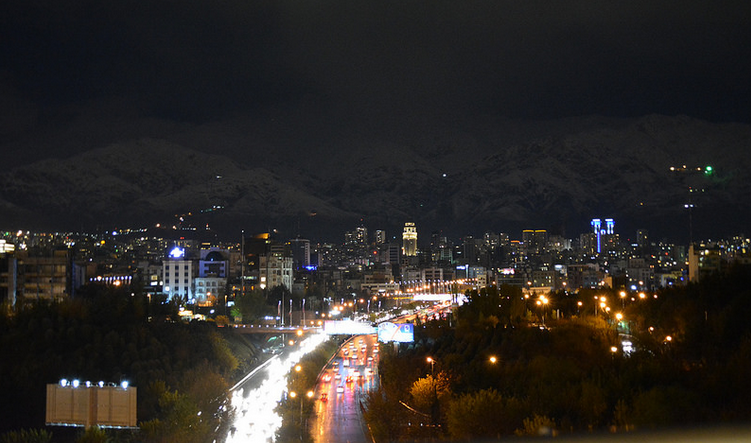In this 2006 Walrus feature, Campbell avoids predicting the future—and instead captures a timeless, thought-provoking moment in Iranian politics.
[[{“fid”:”4385″,”view_mode”:”default”,”fields”:{“format”:”default”,”field_file_image_alt_text[und][0][value]”:””,”field_file_image_title_text[und][0][value]”:””},”type”:”media”,”attributes”:{“style”:”width: 400px; height: 236px; margin-left: 10px; margin-right: 10px; float: right;”,”class”:”media-element file-default”},”link_text”:null}]]Campbell, Deborah, “Iran’s Quiet Revolution,” The Walrus, September 2006.
By Davide Mastracci
A lot has changed in Iran since 2006, when The Walrus published Deborah Campbell’s article, “Iran’s Quiet Revolution.” Campbell’s article thoroughly describes the existing “mutual mistrust between the administrations of Iran and the United States,” which she claims is “illustrated by their reciprocal epithets: the Axis of Evil versus the Great Satan.” Iran and the U.S. are by no means close allies in 2015, but they have been engaging in serious, extended negotiations that would not have been possible when Campbell wrote her article.
Campbell also delves into the landslide election victory of Mahmoud Ahmadinejad, whom she describes as a “scruffily bearded blacksmith’s son who had run [for the Presidency] on a platform of economic justice.” Ahmadinejad has since been voted out of office, and spent a period of time relegated to the margins of Iranian society.
Despite these changes, many elements Campbell describes in her article have remained the same. Benjamin Netanyahu is still claiming Iran will have a nuclear bomb within months, something he has been saying since at least 1996. Republicans in the U.S. are still doing their utmost to prevent any diplomacy with Iran. And above all else, Iran is still the “complex, even contradictory nation” Campbell described.
The current state of affairs in Iran, while fascinating, should not determine how successfully Campbell’s article has aged. She avoids predicting the future, and instead attempts to capture a timeless, thought-provoking moment in Iranian politics.
Her chief success is helping readers to understand Ahmadinejad’s 2005 electoral victory. Less critical writers would reinforce existing media narratives, which argued Iranians must be hateful religious fanatics to have elected Ahmadinejad into office. Instead, she outlines how Ahmadinejad “galvanized millions with promises of fighting corruption and redistributing Iran’s oil wealth,” and went on to a pursue a “populist economic agenda, using state oil revenues to address the most pressing needs of the poor and working class, devoting billions to schools, raising the minimum wage, and lowering lending rates.”
Campbell contrasts Ahmadinejad’s mostly poor rural supporters with his typically wealthy opponents in “the bubble of north Tehran, with its laptops and nose jobs and pizza parlours.” She makes it clear these Iranians longed for increased social liberalization, but showed little concern with the emerging class divide, a privilege not afforded to many of Ahmadinejad’s followers.
This contrast is effectively used to further reduce the mystery surrounding Ahmadinejad’s appeal, by comparing his support base to then-U.S. president George W. Bush’s supporters at the time. Campbell writes:
Like Bush, Ahmadinejad portrays himself as a regular guy, someone you’d have over for kebab and soft drinks (both men are teetotalers). Like Bush, he knows the value of the photo op, posing for the cameras as he kicked around a soccer ball with Iran’s World Cup team. And like Bush, he speaks the language of down-home faith and family values dear to religious conservatives . . . and the language of bellicosity to “the enemy.”
She also makes an effort to humanize average Iranians who still suffer from problematic portrayals in Western media:
Iran is a land of contradictions, and it’s hard to imagine any country in the world where a Westerner would enjoy a more gracious welcome. To be in a shared taxi in any part of Iran is to have your sleeve plucked by someone who says, as an opening gambit, “I would die for you” (a standard greeting in the poetics of Farsi etiquette). And then: “Come to my home.”
Yet since most can’t fulfill this request, Campbell does it for them, taking readers into the homes of a range of Iranians through memorable scenes. Readers become acquainted with a “pleasant-faced housewife” and her battle-scarred husband in Bushehr, a prominent blogger who was arrested and tortured in 2004, a former vice-president of Iran, the daughter of a toy wholesaler in southern Tehran and the first woman in Iran to be awarded with the Nobel Peace Prize. These individuals, and the settings where the writer engages with them, successfully complicate simplistic understandings of Iranians.
Still, Campbell also does not refrain from describing some of the more vehemently anti-American relics cherished by the Iranian state. The most memorable example is her presentation of the former U.S. embassy in Tehran, now formally referred to as the “Den of Spies.” She notes:
Inside the embassy is an exhibition called “American Democracy Fair.” Amid a phantasmagoria of satirical sculptures and caricature art pillorying US and Israeli foreign policy are rooms filled with antiquated James Bond-style equipment, relics from a previous era of US espionage. I passed by decoder devices, a soundproof meeting room, and document shredders. Hundreds of pages of shredded documents revealing American machinations have been meticulously reconstructed and sell on CD at the bookstore next door.
Yet Campbell also points out that this tourist destination attracts mostly journalists and Western diplomats, with English signs an indicator that average Iranians don’t frequent the monument. This detail illustrates exactly why the article is so successful, as it takes readers beyond the staged spectacles in Iran and introduces them to life that may be closer to their own than they’d expect.
[[{“fid”:”4384″,”view_mode”:”default”,”fields”:{“format”:”default”,”field_file_image_alt_text[und][0][value]”:””,”field_file_image_title_text[und][0][value]”:””},”type”:”media”,”attributes”:{“style”:”width: 125px; height: 125px; margin-left: 10px; margin-right: 10px; float: left;”,”class”:”media-element file-default”},”link_text”:null}]]Davide Mastracci is a Master of Journalism student at Ryerson University, and an associate editor at the Islamic Monthly. His work has appeared in various outlets including Al Jazeera America, the Globe and Mail and the National Post.
Students and non-students alike may write a Great Canadian Literary Journalism story on a worthy piece of literary journalism/long form/feature writing/reportage. If interested, please contact Bill Reynolds, reynolds@ryerson.ca.
Illustraition photo by Saeid Zebardast, via Flickr.

